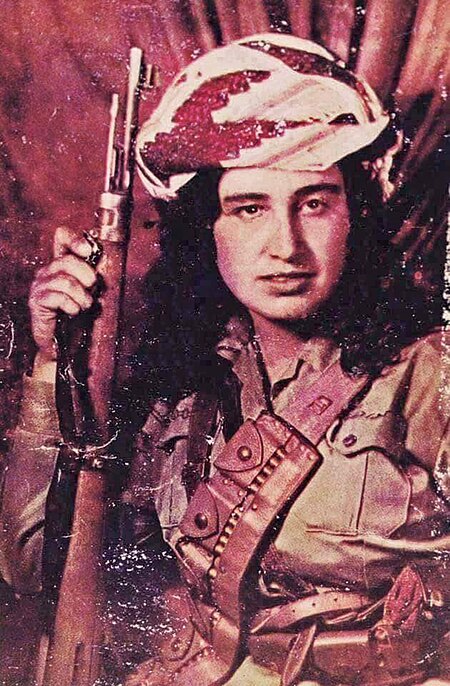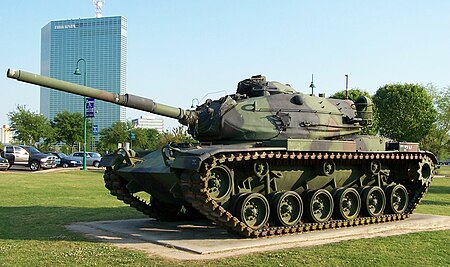Hitopadesha
|
Read other articles:

Perang Musim DinginBagian dari Perang Dunia IIPasukan Finlandia dengan senapan mesinnya selama Perang Musim Dingin.Tanggal30 November 1939 – 13 Maret 1940(3 bulan, 1 minggu, 6 hari)LokasiFinlandia TimurHasil Perdamaian InterimPerubahanwilayah Perjanjian Perdamaian MoskwaPihak terlibat Finlandia Uni SovietTokoh dan pemimpin Carl Gustaf Emil Mannerheim Kliment Voroshilov Semyon TimoshenkoKekuatan 250.000 orang 100 tank 130 pesawat tempur[1][2] 1.000.000 orang 6.541 ta…

VärldsarvHeraion på Samos Geografiskt lägeKoordinater37°40′19″N 26°53′8″Ö / 37.67194°N 26.88556°Ö / 37.67194; 26.88556PlatsSamosLandGreklandRegion*Europa och NordamerikaDataTypKulturarvKriterierii, iiiReferens595HistorikVärldsarv sedan1992 (16:de mötet) Heraion på Samos . * Enligt Unescos indelning. Heraion på Samos är ett tempel helgat åt den grekiska gudinnan Hera, ett så kallat heraion, på ön Samos i regionen Nordegeiska öarna i Greklan…

ХристианствоБиблия Ветхий Завет Новый Завет Евангелие Десять заповедей Нагорная проповедь Апокрифы Бог, Троица Бог Отец Иисус Христос Святой Дух История христианства Апостолы Хронология христианства Раннее христианство Гностическое христианство Вселенские соборы Ни�…

This article uses bare URLs, which are uninformative and vulnerable to link rot. Please consider converting them to full citations to ensure the article remains verifiable and maintains a consistent citation style. Several templates and tools are available to assist in formatting, such as reFill (documentation) and Citation bot (documentation). (August 2022) (Learn how and when to remove this message) County-level city in Shandong, People's Republic of ChinaLongkou 龙口市County-level cityLoca…

Protein-coding gene in the species Homo sapiens KCNK4Available structuresPDBOrtholog search: PDBe RCSB List of PDB id codes3UM7, 4I9W, 4RUE, 4RUF, 4WFE, 4WFF, 4WFG, 4WFHIdentifiersAliasesKCNK4, K2p4.1, TRAAK, TRAAK1, potassium two pore domain channel subfamily K member 4, FHEIGExternal IDsOMIM: 605720 MGI: 1298234 HomoloGene: 7391 GeneCards: KCNK4 Gene location (Human)Chr.Chromosome 11 (human)[1]Band11q13.1Start64,291,302 bp[1]End64,300,031 bp[1]Gene location (Mouse)Chr.C…

Municipality in Central-West, BrazilEdéiaMunicipality FlagLocation in Goiás stateEdéiaLocation in BrazilCoordinates: 17°20′15″S 49°55′43″W / 17.33750°S 49.92861°W / -17.33750; -49.92861CountryBrazilRegionCentral-WestStateGoiásMicroregionVale do Rio dos BoisArea • Total1,466.3 km2 (566.1 sq mi)Elevation601 m (1,972 ft)Population (2020 [1]) • Total12,467 • Density8.5/km2 (22/sq mi…

Association football match Football match2005 FIFA Club World Championship finalOfficial programme of the tournamentEvent2005 FIFA Club World Championship São Paulo Liverpool 1 0 Date18 December 2005VenueInternational Stadium, Yokohama[1]RefereeBenito Archundia (Mexico)[1]Attendance66,821[1]← 2000 2006 → The 2005 FIFA Club World Championship final was an association football match played between São Paulo of Brazil, the CONMEBOL club champions, and Liverpool…

Margaret George ShelloMargaret Corc, peshmerga Kurdi pertamaLahir1941Barwari, IrakMeninggal1969, (umur 28)Kala-Komereyh, IrakPekerjaanGerilyawanGerakan politikPartai Demokrat Kurdi Margaret George Shello (bahasa Suryani: ܡܪܓܪܝܬ ܓܝܘܪܓܝܣ ܫܠܘ), adalah seorang pejuang Asyur yang bergabung dengan gerilyawan Kurdi dalam perjuangan mereka melawan pemerintah Irak pada 1960-an. Dia bergabung dengan jajaran Peshmerga di usia 20 pada tahun 1960, dan dengan cepat menegaskan dirinya di an…

Czech politician You can help expand this article with text translated from the corresponding article in Czech. (March 2024) Click [show] for important translation instructions. Machine translation, like DeepL or Google Translate, is a useful starting point for translations, but translators must revise errors as necessary and confirm that the translation is accurate, rather than simply copy-pasting machine-translated text into the English Wikipedia. Do not translate text that appears unreli…

English politician For other people named Edmund Dunch, see Edmund Dunch (disambiguation). This article needs additional citations for verification. Please help improve this article by adding citations to reliable sources. Unsourced material may be challenged and removed.Find sources: Edmund Dunch Whig – news · newspapers · books · scholar · JSTOR (January 2023) (Learn how and when to remove this message) Portrait of Edmund Dunch by Godfrey Kneller E…

British naval officer Admiral Howe redirects here. For other uses, see Admiral Howe (disambiguation). Richard Howe redirects here. For other uses, see Richard Howe (disambiguation). Admiral of the Fleet The Right HonourableThe Earl HoweRichard Howe, painted by John Singleton Copley, 1794Born(1726-03-08)8 March 1726London, EnglandDied5 August 1799(1799-08-05) (aged 73)London, EnglandBuriedSt Andrew's Church, Langar, NottinghamshireAllegiance Kingdom of Great BritainService/branch R…

T92 Light TankDescrizioneTipocarro armato leggero Dimensioni e pesoLunghezza5 m Peso18,5 t voci di carri armati presenti su Wikipedia Il T92 era un innovativo carro armato leggero americano sviluppato negli anni cinquanta dalla Aircraft Armaments. Pesante 18,5 tonnellate e lungo 5 metri, fu progettato come sostituto aviolanciabile/aerotrasportabile del M41 Walker Bulldog, più pesante di ben 5 tonnellate. Non fu mai accettato in servizio. L'armamento principale era costituito da un cannone conve…

Korean-American football player (born 1994) The native form of this personal name is Koo Younghoe. This article uses Western name order when mentioning individuals. In this Korean name, the family name is Koo. American football player Younghoe KooKoo with the Falcons in 2021No. 6 – Atlanta FalconsPosition:PlacekickerPersonal informationBorn: (1994-08-03) August 3, 1994 (age 29)Seoul, South KoreaHeight:5 ft 9 in (1.75 m)Weight:185 lb (84 kg)Career informationHi…

Third Century BCE Roman general and statesman, consul in 260 BCE with Gnaeus Cornelius Scipio Asina Gaius DuiliusReproduction of the victory column of Gaius DuiliusDictator of RomeIn office231 BCCensor of RomeIn office258 BCConsul of RomeIn office260 BC Personal detailsNationalityRomanAwardsTriumphMilitary serviceAllegianceRomeBranch/serviceRoman navyBattles/wars First Punic War Battle of Mylae Gaius Duilius (fl. 260–231 BC) was a Roman general and statesman. As consul in 260 BC, during the Fi…

البحرية النمساوية المجرية الدولة الإمبراطورية النمساوية المجرية الإنشاء 1867 الانحلال 1918 جزء من عسكرية النمسا-المجر [لغات أخرى] الاشتباكات الحرب العالمية الأولى تعديل مصدري - تعديل البحرية النمساوية المجرية أو البحرية الملكية والحرب البحري…

Inspektorat Jenderal Kementerian Sosial Republik IndonesiaGambaran umumDasar hukumPeraturan Presiden Nomor 46 Tahun 2015Bidang tugasmenyelenggarakan pengawasan intern di Kementerian SosialSusunan organisasiInspektur Jenderal-Situs webhttp://www.kemsos.go.id Inspektorat Jenderal Kementerian Sosial Republik Indonesia merupakan unsur pengawas pada Kementerian Sosial Republik Indonesia yang berada di bawah dan bertanggung jawab kepada Menteri Sosial Republik Indonesia dan bertugas menyelenggara…

Albanieau Concours Eurovision 2022 Données clés Pays Albanie Chanson Sekret Interprète Ronela Hajati Langue Albanais, anglais Sélection nationale Radiodiffuseur RTSH Type de sélection Festivali i Këngës Date 29 décembre 2021 Concours Eurovision de la chanson 2022 Position en demi-finale 12e (58 points, éliminée) 2021 2023 modifier L'Albanie est l'un des quarante pays participants du Concours Eurovision de la chanson 2022, qui se déroule à Turin en Italie. Le pays est représent…

Artikel ini tidak memiliki referensi atau sumber tepercaya sehingga isinya tidak bisa dipastikan. Tolong bantu perbaiki artikel ini dengan menambahkan referensi yang layak. Tulisan tanpa sumber dapat dipertanyakan dan dihapus sewaktu-waktu.Cari sumber: Lowokwaru, Malang – berita · surat kabar · buku · cendekiawan · JSTORLowokwaruKecamatanLowokwaruPeta lokasi Kecamatan LowokwaruKoordinat: 7°56′46″S 112°37′18″E / 7.94612°S 112.621…

В Википедии есть статьи о других людях с фамилией Рыскулов. У этого термина существуют и другие значения, см. Турар Рыскулов. Турар Рыскуловказ. Тұрар Рысқұлұлы Председатель Центрального Исполнительного Комитета Туркестанской АССР январь 1920 — август 1920 Предшественник…

American metal band MudvayneMudvayne in 2021. Left to right: Ryan Martinie, Chad Gray, Matthew McDonough, Greg TribbettBackground informationOriginPeoria, Illinois, U.S.Genres Alternative metal nu metal progressive metal hard rock DiscographyMudvayne discographyYears active 1996–2010 2021–present LabelsEpicSpinoffs Hellyeah Audiotopsy Members Greg Tribbett Matthew McDonough Chad Gray Ryan Martinie Past members Shawn Barclay Websitemudvayneofficial.com Mudvayne is an American heavy metal band…
